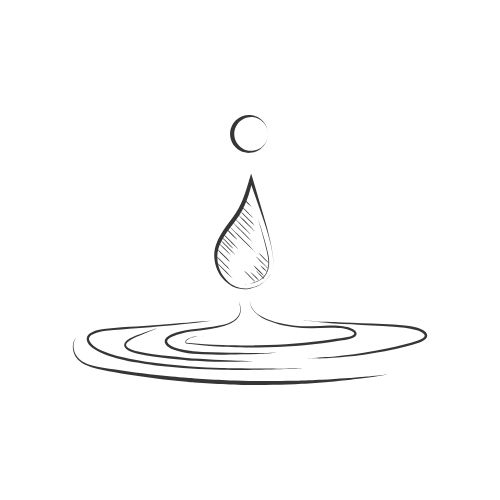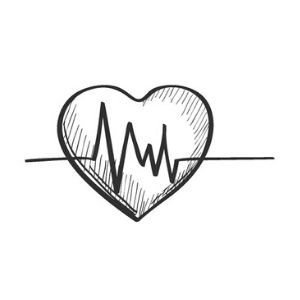
REHYDRATION
ROUTINES
A healthy rehydration routine always beats reactive rehydration, hands down. But, it’s easy to overlook. For starters, not all hydration is equal. We all know the 8 glasses of water rule, and love to count tea, coffee and energy drinks as part of our quota. Yet, the reality is that these all have dehydrating properties so they aren’t quite as good as simple water. There is actually no universally agreed quantity of water to consume daily, it’s about finding your personal sweet spot. You can usually tell when you are well hydrated if your urine is clear or only has the tiniest hint of yellow.
WHY IS WATER SO WONDERFUL?
To function properly, all your cells and organs need water.
These are just a few reasons to stay on top of your water intake:
1.
Peak physical performance
It is common for athletes to lose as much as 6–10% of their water weight via sweat, and even just a small loss of 2% can affect performance. Body temperature control, motivation, and fatigue all take a hit, making workouts more difficult. For peak physical and mental stamina, stay hydrated.
2.
Boosts brain function
Researchers found that, for women, fluid loss of 1.4% after exercise impaired both mood and concentration. It also increased the frequency of headaches. In a similar study – where men experienced fluid loss of 1.6% – working memory, anxiety and fatigue increased.
3.
Helps prevent headaches
Research shows that a headache is one of the most common symptoms of dehydration and that drinking water can help relieve frequent headaches. There are also similar indications for migraines.
4.
It lubricates the joints
Cartilage, found in joints and the disks of the spine, contains around 80 percent water. Long-term dehydration can reduce the joints’ shock-absorbing ability, leading to joint pain.
5.
It boosts skin health
With dehydration, the skin can become more vulnerable to skin disorders and premature wrinkling.
DEVELOPING A ROUTINE
So let’s look at the steps you can take to rehydrate before thirst kicks in…
to track your cups
Keeping up with how many glasses you’ve finished can be easy (and fun) with the help of a free app like Daily Water Free or Daily Water. Download them to your phone to set daily reminders and alarms.
hot or cold
What is tea but deliciously flavored water? Drink it hot in the winter and ice it in summer. Whether you like citrus, floral, spicy, or even chocolate-y, there’s a tea out there for you.
or glass
Carry a water bottle with you and refill it throughout the day. A bottle or glass with measurements will bring my awareness and intent into your rehydration routine.
in your diet
It’s actually possible to eat your H2O by adding fruit and veg with a high water content into your diet. Watery wonders include cucumber (96% water), courgette (95% water), watermelon (92% water), and grapefruit (91% water).
for regular rehydration
A great way to get more attuned to your hydration needs is by ‘stacking’ drinking a glass of water onto a habit you already do daily, like eating lunch, brushing your teeth, daily workout etc.
with deadlines
A goal such as ‘drink eight glasses by the end of the day’ can become overwhelming if you drop the ball a bit. Instead, try ‘micro-goals’ such as drink two glasses of water by 10am, four by lunch, and six by 2pm.
DRINK INFUSED WATER
If you find water a bit bland, step away from the soft drinks and infuse your drink with herbs and fruits that you love instead.
Try some of the following recipes to add flavor and nutritional benefits…
¼ cup strawberries, crushed
¼ cup pineapple, crushed
1 sage leaf
Combine all ingredients in a pitcher of water and place in the refrigerator. Drink cold.
1 cucumber, thinly sliced
2 lemons, thinly sliced
Combine all ingredients in a pitcher of water and place in the refrigerator. Drink cold.
1 cucumber, thinly sliced
2 lemons, thinly sliced
Combine all ingredients in a pitcher of water and place in the refrigerator. Drink cold.

THE BOTTOM LINE
Cheers to that!
ake sure that you sip water throughout the day and practice hydration check-ins. Developing greater awareness of your personal signs of dehydration can help you build a habit of making water part of your everyday routine. Look out for a general feeling of tiredness, a hard time completing tasks that require complex processing or your full attention, and difficulty regulating your mood. You can get more attuned to your hydration needs by checking in with yourself regularly – think back to the last time you had a cup of water, contemplate how you’re feeling (moody? can’t concentrate?), and simply whether or not you feel thirsty.
Remember: Even mild dehydration can affect you mentally and physically.